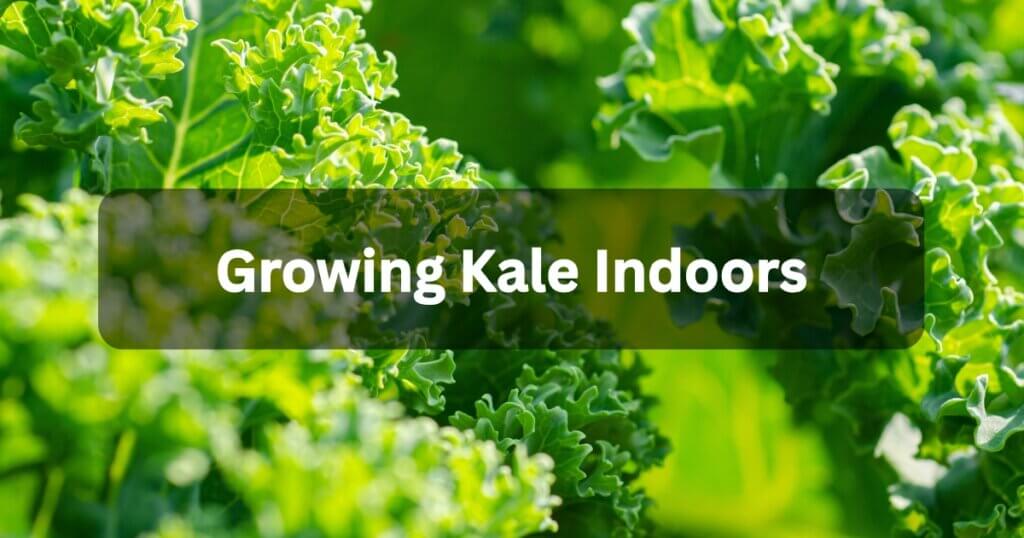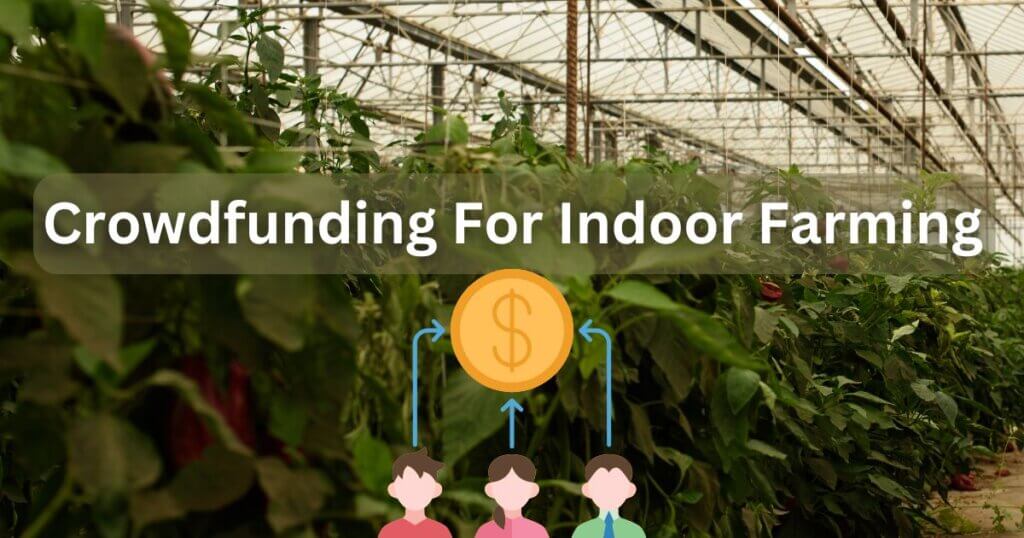7 Shocking Secrets to Growing Kale Indoors Successfully

Some of the links in this post are affiliate links. As an Amazon Associate, we earn a referral fee from qualifying purchases—at no extra cost to you.
Table of Contents
Why Growing Kale Indoors Is a Game-Changer
Imagine harvesting fresh, crispy kale leaves from your kitchen countertop—no dirt, no pests, no waiting for spring. Growing kale indoors isn’t just convenient; it’s revolutionary. You’ll save money, eat healthier, and gain total control over your food. And best of all? It’s easier than you think.
What Makes Kale the Perfect Indoor Crop?
Kale is a hardy, leafy green that thrives in cooler temperatures and low light conditions, making it ideal for indoor farming. It’s packed with vitamins A, C, and K, and is a powerful antioxidant-rich superfood. With a short growing cycle and the ability to regrow after harvesting, kale keeps on giving. That’s why growing kale indoors is perfect for busy people who want fast, nutritious results.
Best Kale Varieties for Indoor Gardening
Curly Kale
This is the classic variety you’ll find in most grocery stores. It’s cold-tolerant, quick to mature, and looks fantastic in a container garden.
Lacinato Kale (Dinosaur Kale)
A favorite among foodies, this variety has long, dark leaves and a slightly sweeter flavor. It’s great for limited indoor space.
Red Russian Kale
Its beautiful red-tinted leaves and tender texture make it a must-have. Red Russian kale is also more tolerant of variable temperatures indoors.
Getting Started: What You’ll Need
Curly Kale
Curly kale is the classic variety commonly found in grocery stores. It’s known for being cold-tolerant and quick to mature, making it a reliable choice for gardeners. This kale’s curly, vibrant green leaves also add visual appeal. It thrives especially well in container gardens.
Lacinato Kale (Dinosaur Kale)
Lacinato kale, also called dinosaur kale, is a top pick among culinary enthusiasts. It features long, dark green leaves with a slightly sweeter and richer flavor than curly varieties. Its upright growth makes it perfect for compact or indoor spaces. This variety also performs well in containers with proper lighting.
Red Russian Kale
Red Russian kale stands out with its striking red-veined leaves and delicate texture. It offers a tender bite, making it ideal for raw or lightly cooked dishes. This variety is especially valued for its tolerance to fluctuating indoor temperatures. Its ornamental look adds a pop of color to your garden or kitchen space.
For growing kale indoors, fabric grow bags like the Gardzen 3-gallon pots offer excellent drainage and root health support. Plus, their handles make moving plants super easy. See them on Amazon.
Where to Grow Kale Indoors
You can grow kale in the kitchen, on a sunny windowsill, in a hydroponic system, or on a grow rack. The key is ensuring the area receives adequate light and has good airflow. Kale thrives in bright, indirect sunlight or under grow lights for several hours a day. Be sure to avoid drafty spots near windows or direct heat from vents, which can stress the plants.
Light Requirements for Growing Kale Indoors
Kale isn’t too picky, but it absolutely thrives in bright light. A sunny, south-facing window is the best natural option for healthy growth. If you don’t have enough sunlight, a full-spectrum LED grow light works perfectly. Position the light 6–12 inches above the plant and use a timer to keep it on for 12–14 hours each day.
One great option is the Barrina LED Full Spectrum Grow Light, which provides intense, evenly distributed light and includes everything you need to mount it easily. It’s perfect for kale and other leafy greens grown indoors. Check it out on Amazon.
Temperature and Humidity Tips
Kale grows best in temperatures between 60–70°F, which is ideal for indoor environments. If it gets too hot—especially above 75°F—the leaves can develop a bitter taste. Maintaining moderate humidity levels between 40–60% helps keep the plant healthy. This balance prevents issues like mildew, leaf curl, or stunted growth.
Watering Kale Indoors the Right Way
Don’t overwater your kale—consistently moist soil is key, but it shouldn’t be soggy. Check moisture by sticking your finger about an inch into the soil; if it feels dry, it’s time to water. Always water at the base of the plant to keep the leaves dry. This helps prevent fungal problems and promotes healthy growth.
Nutrient Needs and Indoor Fertilizers
Feed your kale with a balanced liquid fertilizer, such as 10-10-10 or 20-20-20, every 2–3 weeks for steady growth. Organic options like worm tea or seaweed extract also work well and are gentler on the plant. Be cautious not to overfeed, as excessive nitrogen can lead to overly leafy plants with less flavor. A consistent, moderate feeding schedule supports healthy and tasty harvests.
For organic gardeners, the FoxFarm Liquid Nutrient offers a complete feeding solution with easy-to-follow instructions. It’s especially effective for leafy greens like kale. View on Amazon.
Growing Kale Indoors Without Soil (Hydroponics)
Hydroponics is a super-efficient way to grow kale indoors, offering fast and mess-free results. Kale performs especially well in systems like nutrient film technique (NFT), deep water culture (DWC), or the simple Kratky method. To keep your kale thriving, use a quality hydroponic nutrient solution and maintain pH levels between 5.5 and 6.5. This setup promotes rapid, clean growth without the need for soil.
A great starter system is the VIVOSUN DWC Hydroponic Bucket Kit, which comes with everything needed to begin growing kale hydroponically at home. See it on Amazon.
How to Prune and Harvest Kale Indoors
Wait until your kale has developed around 6–8 mature leaves before harvesting. Start by picking the outer leaves, which allows the center to continue producing new growth. Always leave the central growth untouched to keep the plant healthy. Avoid removing more than one-third of the plant at a time to ensure continuous harvests for months.
How Long Does It Take to Grow Kale Indoors?
From seed to first harvest takes about 30–40 days. After that, kale keeps producing for several months with proper care. That’s a lot of return for just a little effort.
| Stage | Timeframe |
|---|---|
| Germination | 5–10 days |
| Seedling | 10–14 days |
| First Harvest | 30–40 days |
| Ongoing Growth | 3–4 months or more |
Why Your Kale Might Not Be Growing Well Indoors?
Still struggling? It could be due to:
- Insufficient light – Upgrade your grow light or increase hours.
- Poor drainage – Make sure your pots aren’t waterlogged.
- Overcrowding – Thin seedlings early so each plant gets space.
Final Tips for Growing Kale Indoors Like a Pro
- Use a fan for air circulation to prevent mold.
- Rotate plants every few days to ensure even light exposure.
- Clean your tools and trays regularly to prevent disease.
A small, quiet fan like the Vornado Flippi helps maintain healthy airflow around your kale plants and minimizes the risk of mold and mildew. Check it out on Amazon.
Conclusion: Growing Kale Indoors Is Easier Than You Think
You don’t need a garden, a greenhouse, or even a backyard to grow nutritious, delicious kale. All it takes is a bit of light, the right soil (or no soil!), and a little love. Whether you’re growing curly kale in a pot or trying hydroponics for the first time, the reward is fresh, healthy greens at your fingertips. So why wait? Start growing kale indoors today and enjoy year-round harvests that your body—and taste buds—will thank you for.
FAQs – Growing Kale Indoors
1. Can kale be grown indoors during winter without additional heating?
Yes, kale is cold-tolerant and can survive lower indoor temperatures, but for optimal growth and flavor, maintaining daytime temps around 60–70°F is best. If your home is cooler in winter, using a small heat mat or placing plants near a warm window can help.
2. How often should I change the water in a hydroponic kale system?
It’s recommended to refresh the nutrient solution every 1–2 weeks to prevent salt buildup and nutrient imbalances. Regularly check pH and electrical conductivity (EC) to keep nutrients in the ideal range for kale.
3. Are there natural pest deterrents suitable for indoor kale?
Yes, using neem oil sprays, insecticidal soap, or introducing beneficial insects like ladybugs indoors can manage pests organically. Also, maintaining good airflow and removing dead leaves reduces pest habitats.
4. Can I save seeds from indoor-grown kale for future planting?
Absolutely! Allow a kale plant to flower and produce seed pods, then harvest the seeds once dry. However, indoor conditions might delay flowering, so patience and proper lighting are needed.
5. What are common signs of nutrient deficiencies in indoor kale?
Yellowing leaves may indicate nitrogen deficiency; purpling can suggest phosphorus lack. Curling or browning leaf edges might signal potassium issues. Adjust fertilizer type or frequency accordingly for best results.
Other Useful Resources Related To Growing Kale Indoors
- Nutritional Benefits of Kale
Discover the impressive health benefits of kale, including its high vitamin content and antioxidant properties.
Sustainable Eating: GREEN KALE Benefits & Nutrition – Click & Grow - Best Kale Varieties for Indoor Gardening
Explore various kale types suitable for indoor cultivation, such as Winterbor and Redbor, known for their productivity and cold hardiness.
Types of Kale: 14 of the Best Kales to Grow – Savvy Gardening(savvygardening.com) - Step-by-Step Guide to Growing Kale Indoors
Learn how to successfully grow kale indoors, even without a grow light setup, by utilizing sunny windowsills or shelves.
How to Grow Kale Indoors – Savvy Gardening(savvygardening.com) - Hydroponic Kale Growing Guide
Understand the specifics of growing kale hydroponically, including optimal pH levels, seed spacing, and lighting requirements.
Hydroponic Kale: A Complete Indoor and Outdoor Grow Guide – Ponics Life(ponicslife.com) - Common Problems When Growing Kale Indoors
Identify and manage common pests like cabbage aphids that can affect indoor kale plants, and learn effective treatment methods.
3 Common Kale Pests and How to Manage Them – GrowVeg








